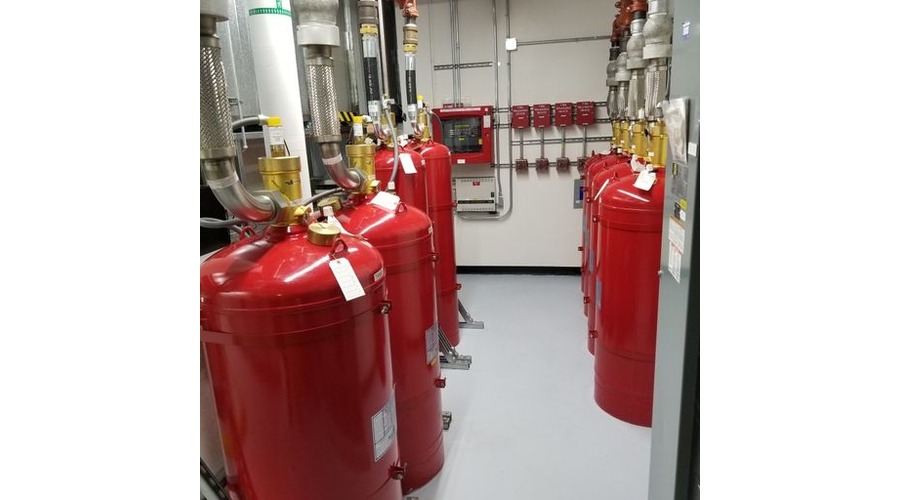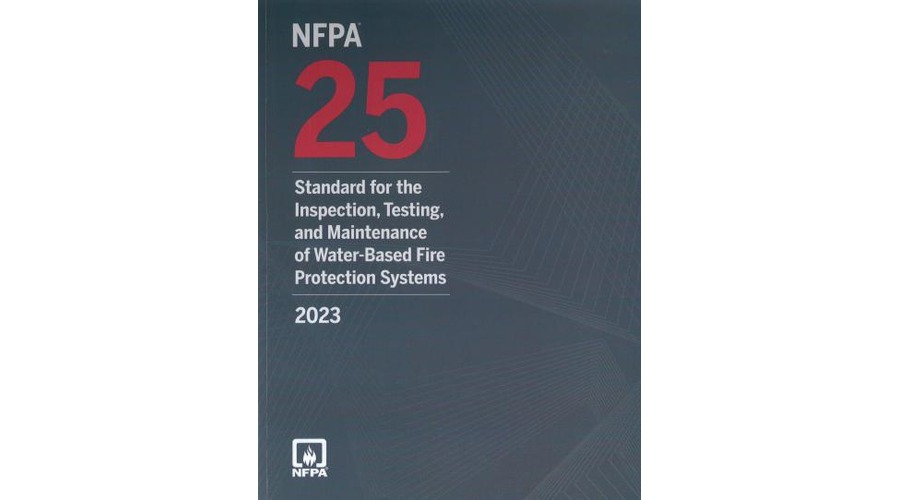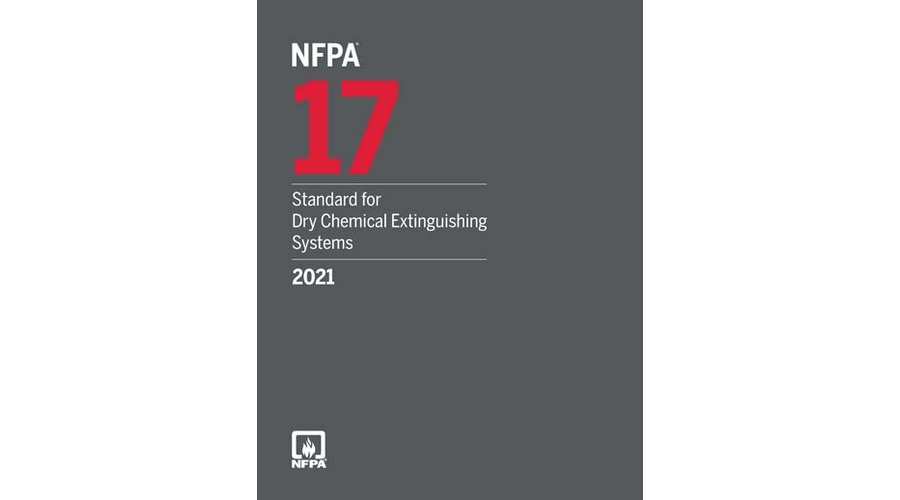

What’s Room Integrity Testing,
and Why Should I Care About It?
Understanding Room Integrity Testing: A Crucial Step for Building Performance
Unfortunately, one of the most overlooked aspects of a fire suppression system is room integrity testing. Many property owners don’t realize that doing a room integrity test is essential for ensuring that their fire suppression systems work effectively. While a room’s integrity might seem fine when the system is first installed, things like cables and piping can create leaks over time. These leaks can cause gas to escape too quickly during a fire, which means the system might not have enough time to put out the fire effectively. Regular room integrity tests help ensure that the fire suppression system can do its job when you need it most.
What Is Room Integrity Testing?
Room integrity testing is a procedure that measures air tightness in an enclosure. The test ensures gas does not leak too quickly from a given room. If the gas does leak too quickly, your fire suppression system may be unable to extinguish a fire properly.
This type of fire suppression test is conducted by either pressurizing or depressurizing an enclosure and measuring the rate at which the pressure changes. Minimally, the extinguishing agent should remain in the room for a period of at least 10 minutes. For suppression systems using CO2, the gas should remain in the room for at least 20 minutes.
The Importance of Room Integrity Testing
Without property room integrity, gas won’t remain in an enclosure long enough to extinguish a fire. This means your fire suppression system could be doing everything correctly, but if gas leaks too quickly from an enclosure, the fire won’t be extinguished. Essentially, the lack of room integrity renders fire suppression equipment useless. Without the proper integrity, the extinguishing agent won’t remain in the room long enough to put out a fire.
Common Issues
Room integrity testing reveals various issues that can affect the effectiveness of your fire suppression system and controlled environments. Here are some common problems found during these tests and their solutions.
Air Leaks
Air leaks are often the first issue detected during room integrity testing. These leaks can be caused by gaps, cracks, or other breaches in the room’s structure, which allow the fire suppression agent or controlled environment conditions to escape. Regular testing can identify these leaks, which can be fixed with sealants like caulk or weather stripping to maintain room integrity.
Improper Door Seals
Faulty door seals can significantly impact the effectiveness of your fire suppression system. Worn or poorly installed seals may let the suppression agent escape, reducing its effectiveness during a fire. Testing can reveal ineffective seals, and replacing or adjusting them ensures they maintain the necessary barrier.
Faulty or Damaged Walls
Cracks or damage in the walls can compromise the room’s integrity. During testing, structural issues in walls might be identified, which can be repaired through patching or reinforcing to maintain the effectiveness of your fire suppression systems.
Improperly Installed or Leaking Pipes and Cables
Pipes and cables that penetrate walls or ceilings can create leaks if not properly sealed. Integrity tests can uncover these issues, and sealing around pipes and cables with fire-rated materials helps prevent air leaks and maintains room integrity.
Ineffective Room Pressurization
Incorrect room pressurization can impact both fire suppression systems and environmental controls. Testing will reveal if the room is under or over-pressurized, and adjustments to the ventilation systems can correct these issues to ensure proper room conditions.
Broken or Malfunctioning Fire Dampers
Fire dampers that don’t close properly can let smoke and fire spread. During testing, broken dampers might be detected, and repairing or replacing them ensures they function as intended during a fire emergency.
Inadequate Sealant for Penetrations
Sealants used for room penetrations can deteriorate over time, causing leaks. Testing will show if sealants are still effective, and reapplying or upgrading sealants helps maintain the room’s integrity.
Unidentified Structural Changes
Unreported changes to the room’s structure can introduce leaks or other issues. Testing helps identify the impact of these changes, and documenting or verifying modifications ensures they don’t compromise room integrity.




How To Check Room Integrity
A team of trained technicians performs room integrity tests. Common systems that require regular room integrity testing are Co2, FM200, IG55, IG541, Inergen, and NOVEC 1230.
This testing is done using blower doors that either pressurize or depressurize an enclosure. Measured leakage from the blower door is used to estimate retention time for the clean agent extinguisher.
Property owners are then given a report of the room integrity testing results. These results should be kept and filed by the property owner in order to maintain records of testing findings and dates.
Preparation: How to Prepare for a Room Integrity Test
Ensuring your room is ready for a room integrity test is crucial for accurate results. Here’s a simple checklist to help you prepare effectively:
- Review Documentation: Check all current room integrity test reports and any updates to room configurations or equipment. Make sure you have the latest documentation available.
- Clear the Room: Remove any items or equipment that might obstruct the test or be damaged. A clear room helps testers access all areas and ensure accurate measurements.
- Check Doors and Seals: Inspect all doors, seals, and barriers for wear or damage. Ensure that all doors close properly and that seals are intact.
- Confirm System Functionality: Make sure that all fire suppression systems, alarms, and emergency equipment are operational. Testing these systems beforehand can help identify any potential issues.
- Notify Staff: Inform building occupants and staff about the scheduled test. Clear communication helps prevent disruptions and ensures that everyone understands the purpose of the test.
- Document Recent Changes: Make a note of any recent modifications to the room’s structure or equipment. Sharing this information with the testing team helps them understand potential impacts on room integrity.
Who Needs Room Integrity Testing?
Room integrity testing is an important aspect of facility management for various types of buildings. Here’s a guide to help you determine if your facility requires room integrity testing:
1. Fire Protection Facilities.
Facilities equipped with fire suppression systems, such as clean agent fire extinguishing systems, require room integrity testing to ensure these systems can effectively contain and extinguish fires. Regular testing is essential to maintain system performance.
2. Controlled Environments.
If your facility includes controlled environments like laboratories, data centers, server rooms, hospitals, or clean rooms, room integrity testing is crucial. It ensures that the room maintains the necessary conditions for operations and complies with environmental control standards.
3. High-Safety Areas.
Facilities with stringent safety and regulatory requirements, such as hospitals or specialized manufacturing plants, need room integrity testing to meet compliance standards and ensure the effectiveness of safety measures.
4. Insurance Requirements.
Many insurance policies mandate regular room integrity testing as part of the coverage conditions. Ensuring that tests are up-to-date helps you meet insurance requirements and maintain your coverage.
5. Building Codes.
Local building codes may require room integrity testing for new constructions or major renovations. Adhering to these codes is necessary for legal compliance and to ensure the building’s safety features are up to standard.
Room integrity testing is necessary for facilities with fire suppression systems, controlled environments, high-safety areas, insurance requirements, and specific building code regulations. If your facility falls into one of these categories, regular testing is essential for maintaining safety and compliance.
Room Integrity Testing FAQS
Overall, room integrity testing plays a critical role in verifying that your fire suppression systems will perform effectively in an emergency. If you’re looking for reliable testing services or need to upgrade your current system, get in touch with us. We offer expert solutions to ensure your fire protection systems are always ready when you need them!




